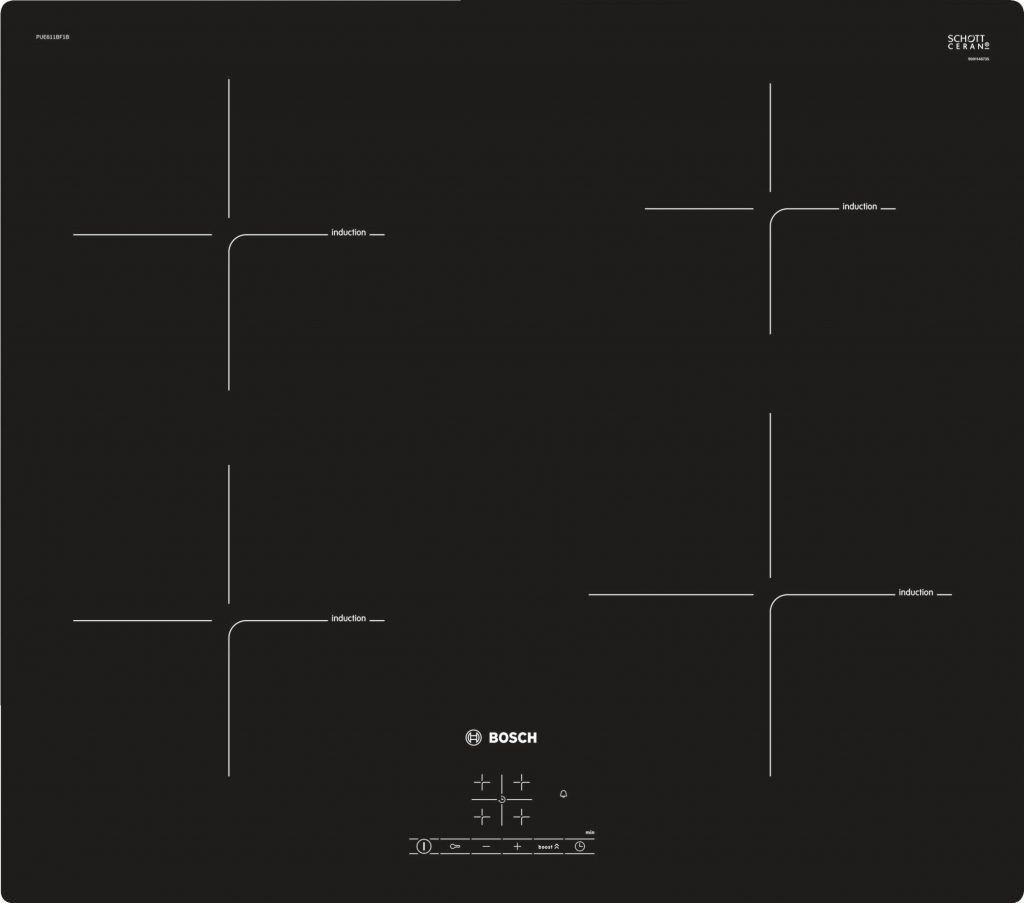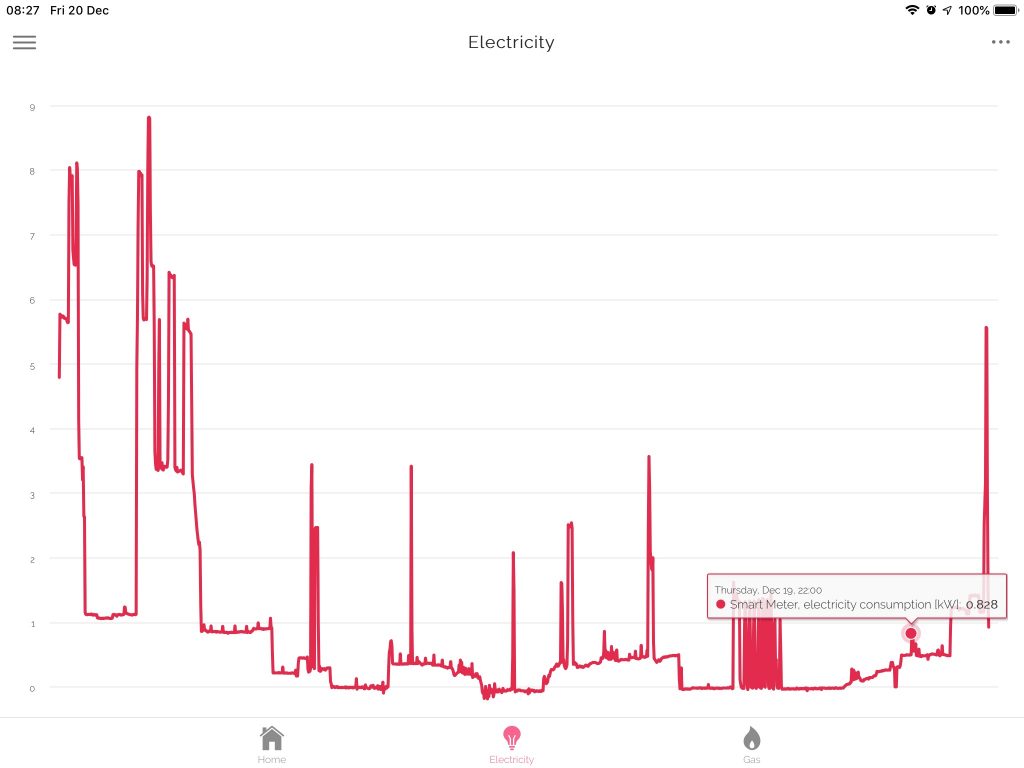One of the features of our home is the all-electric kitchen. We do have gas for space heating and as a back-up on the hot water for days that are both dull and have relatively high cost electricity, but the kitchen is all-electric. I have to say that this was not our choice, rather the kitchen came that way when we bought the house five years ago. We have replaced the oven in the meantime, but until today the hob was that bought with the house.
Unfortunately the hob suffered a failure of the two of the rings and today we’ve replaced it like-for-like with a new inductive unit. Inductive is attractive as it’s relatively efficient, but I was struck by the fact that the one hob required a 32 Amp supply, but the new one manages with a 13 Amp plug.

So, by what magic does the new hob use less than half the power of its predecessor?
| item | old hob | New hob |
|---|---|---|
| Smallest ring | 1,200 Watts | 1,400 Watts |
| Second smallest | 1,400 Watts | 1,800 Watts |
| Second largest | 1,800 Watts | 1,800 Watts |
| Largest ring | 2,200 Watts | 2,200 Watts |
| Total * | 6,600 Watts | 3,000 Watts |
The first thing to observe is that the sum of the ring powers does not equal the manufacturer’s total for the new hob, although it does for the old hob. The second would be that the sum of the new ring powers at 7,200 Watts is more than the sum of the old ring powers even though the required total is less!
The answer is that the new hob features power management capability. In any hob the rings will spend much of their time cycling on and off to maintain the required heat. In the old hob all the rings might on at one time drawing maximum power, but a few moments later they might all be off. However the power management in the new hob the total power would be levelled out so that the average over time might be the same, but the peaks smaller and the troughs shallower.
For most people this levelling out of the power demand would pass unnoticed, but for us it could be quite useful.

Powervault storage 
Grid import
We do most of our cooking in the evenings for which, particularly in winter, power is taken from our Powervault storage battery with any excess from the grid as illustrated by the series of evening spikes in the image to the right. The Powervault has a relatively limited maximum power (hence the spikes) but as the new hob has power management then any spiking beyond battery maximum power capability should be reduced thus avoiding what, for us, could be peak rate electricity at 35 p/kWh on our dynamic smart tariff which is a direct cost save.
